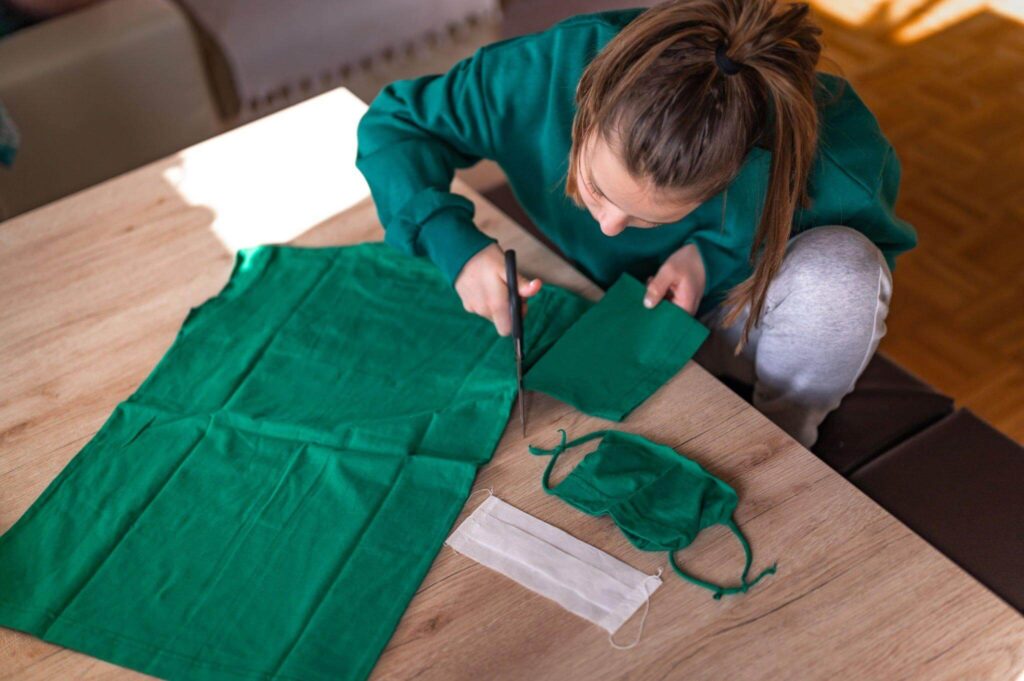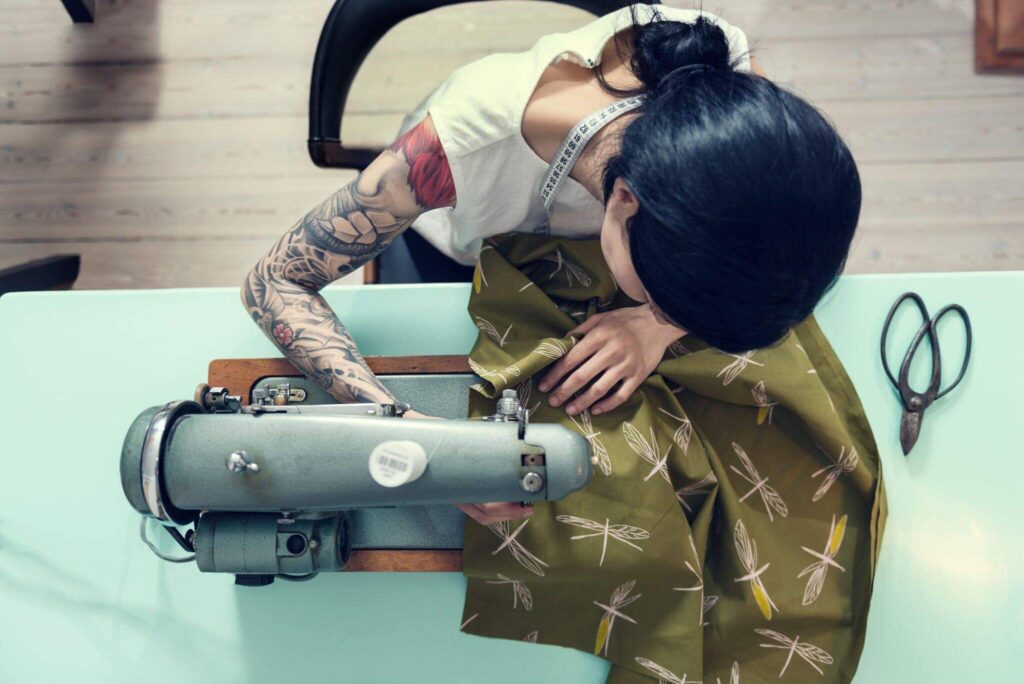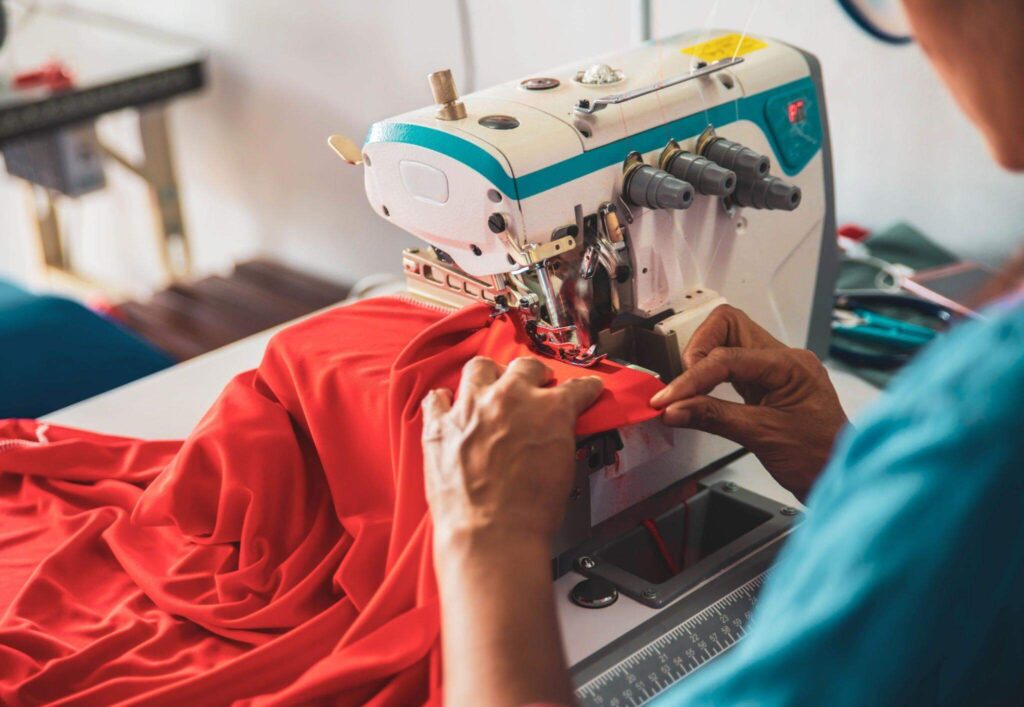It can be difficult to understand the process of how clothes are made if you have no background in the sector. When collaborating with a production of clothing for the first time, many people experience;
- Frustration due to delays
- Lengthy lead periods
- Factory’s inability to accommodate last-minute alterations from the brand
First comes the sketch, then the tech pack, and finally the CAD layout for any design. Then you’ll have to make your clothes!
But if you want to manage production in-house instead of contracting it out. You’ll quickly learn that how to manufacture clothing is not as easy as clearing a room and setting up the sewing machines and cutting tables.
From beginning to end, this is how it looks like;
yet, many of these processes are occurring simultaneously in the manufacturing of clothes;

-
Make A Plan For Marketing And Sales
You should know how much you can sell before you start mass production of clothing. This is a tricky situation, and it will take some time to learn how to find a good balance between how much customers want and how much you can (and should) make. Talk to stores you think might be interested in selling your clothes.
Ask about minimum orders, how often they order from them again, and how much they usually sell. When do they place orders for different seasons, and when do they want them delivered? All of this information will affect how you market and sell your clothes to retailers.
-
Make Your Designs
Most factory-made clothes are made on an assembly line, where different people cut, align, and sew the pieces. Your patterns must be very clear and exact, with all the necessary marks, so that each time you make a garment, it will be exactly the same.
-
Putting The Patterns In Order
Grading and sizing can be hard to understand, even for people who make their own patterns. How dresses are made from a size 2 dress to a size 10 dress? How do they differ? Again, this is usually a job for a professional, unless you want to make a pattern for each size of clothing manufacturing you sell.
When working with digital patterns, the pattern maker can make changes and adjustments that are as precise as surgery. All changes to measurements can be seen and kept track of in real time.

-
Lay-Plan: Getting Patterns Ready To Be Made
The next step is to use a plotter to print out the patterns. To do this, you had to make a proper lay plan, which meant putting all the pattern blocks in a certain order (in our case, sampling) and taking into account things like the length of the fabric, the width of the roll, the total number of items to be made, and a breakdown of sizes.
Now that patterns are in the system, it’s easy to do. The software used for the lay plan then suggested the best way to arrange these geometric shapes (patterns) based on the amount of fabric you had and other factors, so you could get the most out of it and use less. Even though the software did this pretty well, there are still some things that could be done better.
Keep in mind that the amount of clothing fabric needed for a sample and for how to mass-produce clothing of the same item can be very different. You put shapes on top of each other and try not to leave any blanks or empty spaces.

-
Making The Cuts
The plotter printed out our patterns from the pre-made lay plan, and workers were ready to cut our fabric. Patterns were printed on special paper that stuck perfectly to the fabric, so when they were cut, nothing moved. As the cutting started, we saw that the first part was done by hand with scissors, but the finer parts were cut with special tools.
Samples are often cut by hand, while the process for mass production of clothing is a little different. Pieces of the same kind of fabric are stacked on top of each other like a cake and cut in large quantities. Whether or not fabric can be cut together depends on what it is made of and how thick it is.
For example, you can’t cut cotton and viscose at the same time. When you cut different fabrics, some can stretch and change shape more than others, so the end result will be uneven. This is why a separate cutting job is needed even if the materials are only 1% different.

-
Putting Together Sets For The Sewers
After all the pieces have been cut, they are put back together in sets. To save time on production clothing, similar tasks were grouped together so that people could get faster at doing the same thing over and over.
-
Colors Choice
For the clothes production stage, choose threads that match the color of the fabric. I was able to find the best color match out of a lot of choices. Some only had small differences, and some people haven’t even seen all the shades. Except for elastics, these items don’t need any trims, but the fabric has a wide range of zippers, buttons, and other accessories.
-
Making Changes To The Machinery
Each sewing machine needs to be set up for a certain kind of fabric. Take out the old threads and put in the new reels with the color you chose for our samples. The seamstress put six reels of thread in the flat-lock sewing machine that were the same color as the garment. Then, she tested the seam on a piece of fabric to make sure the tension was set and adjusted correctly.
Fast Turnaround, Flawless Quality
Get Manufacturing Now-
Sewing Up
Check to make sure everything is set up right, then lay out the set and sew the pieces together until you can see the design coming together.
-
Finishing
Once the items were finished, I took them to the sampling unit to compare the measurements to our specs. You want your things to arrive in good shape. That could mean dipping them in a stabilizing starch solution and pressing them just right, or vacuum sealing them in garment bags to keep delicate beading from getting damaged.
Everything should look good, and you should do a thorough Quality Check. After that, you should approve them for grading and send them on to the next big order.
-
Box Up And Send
Time to go! Take careful stock of orders as they are being packed to make sure the right items are going to the right customers. No one wants to go through the trouble of reshipping things and hoping they are sent back correctly.
-
Keep In Touch With Your Customers
Your question about how clothing is made has been answered and sent out, and (hopefully) customers are buying them as soon as they hit the shelves. But are you sure about that? Is there something that your stores would really like to see? Something that isn’t going as fast as you thought it would? Check in with your retailers to find out what you can do better in the future.







